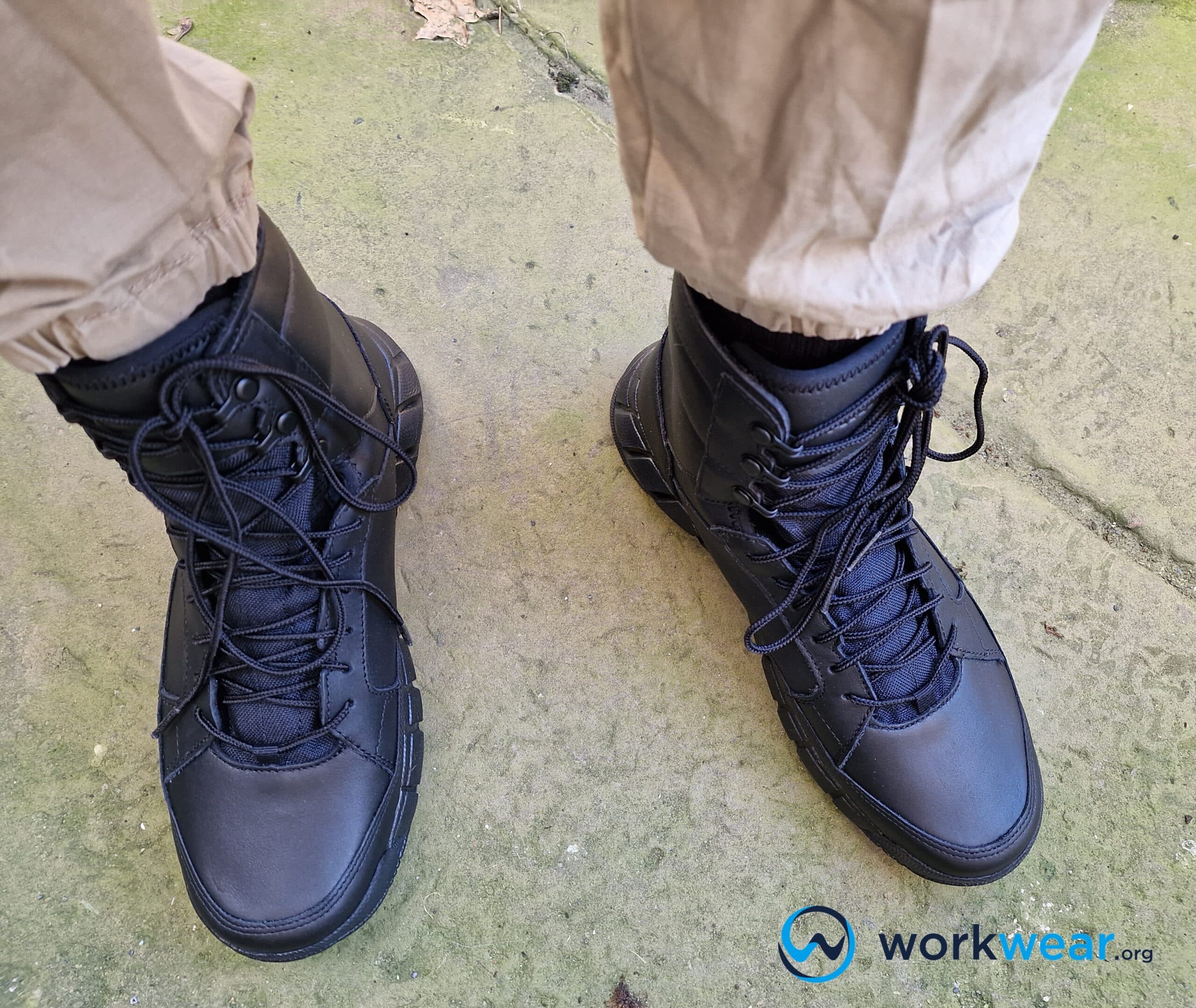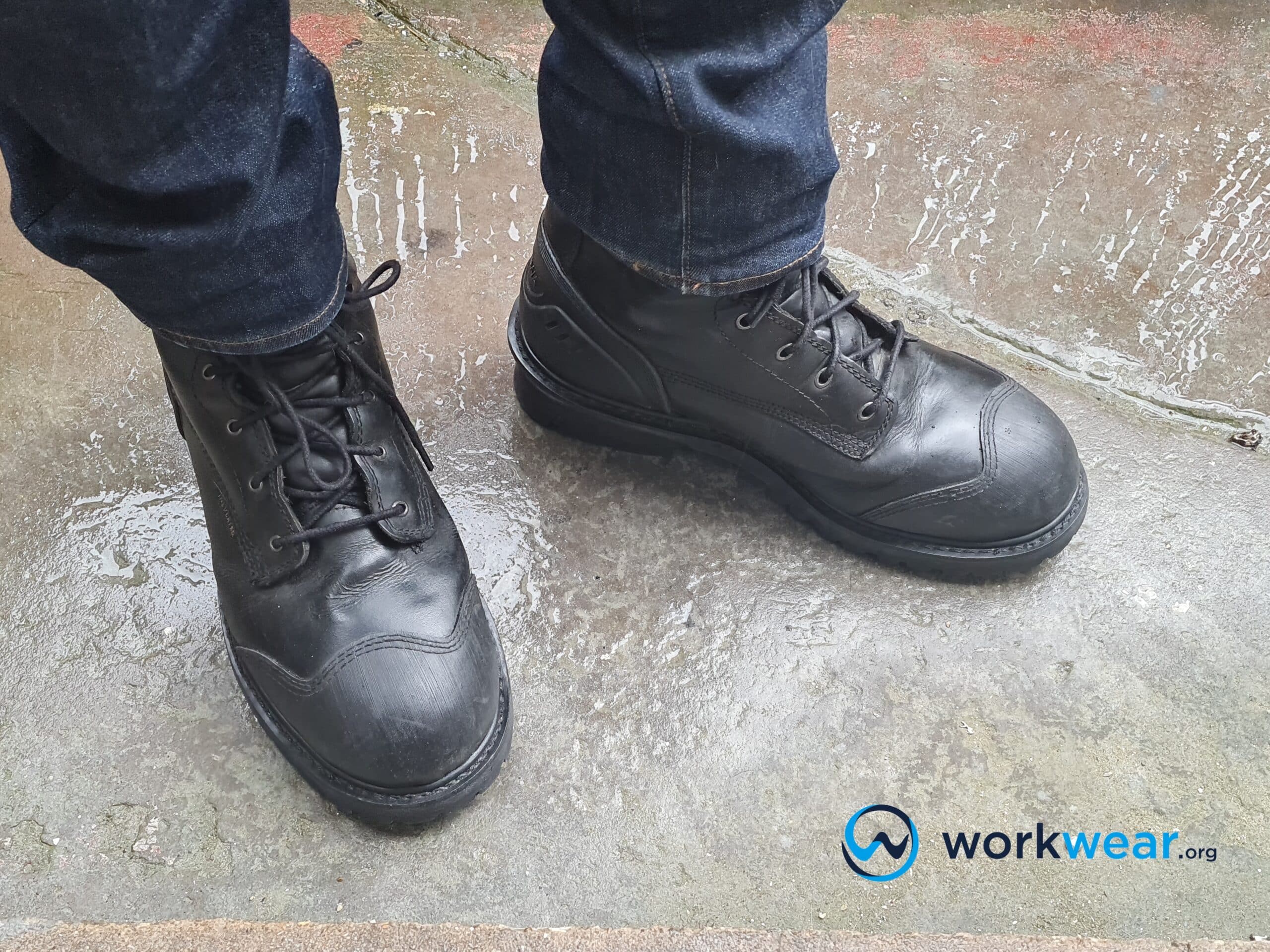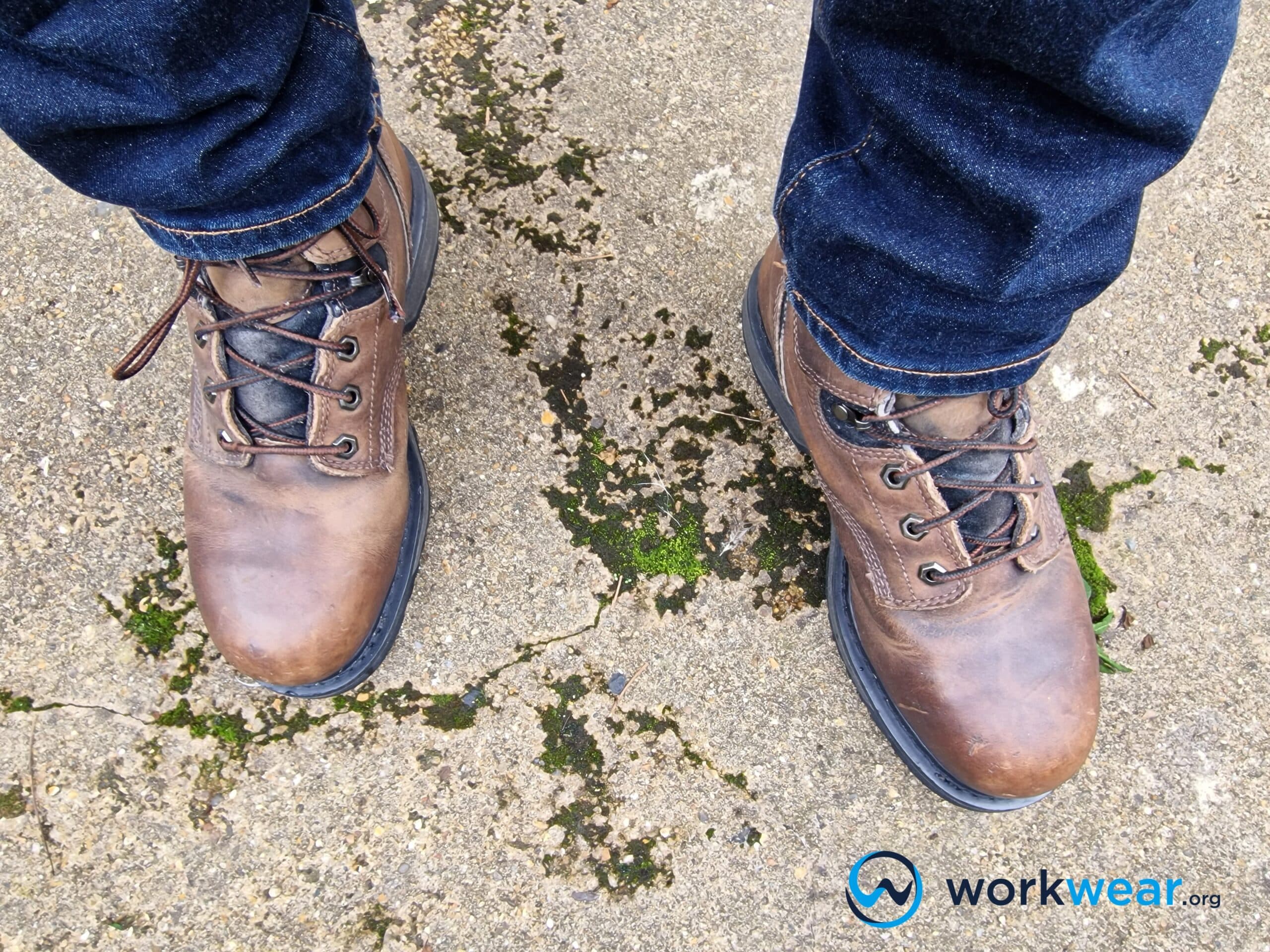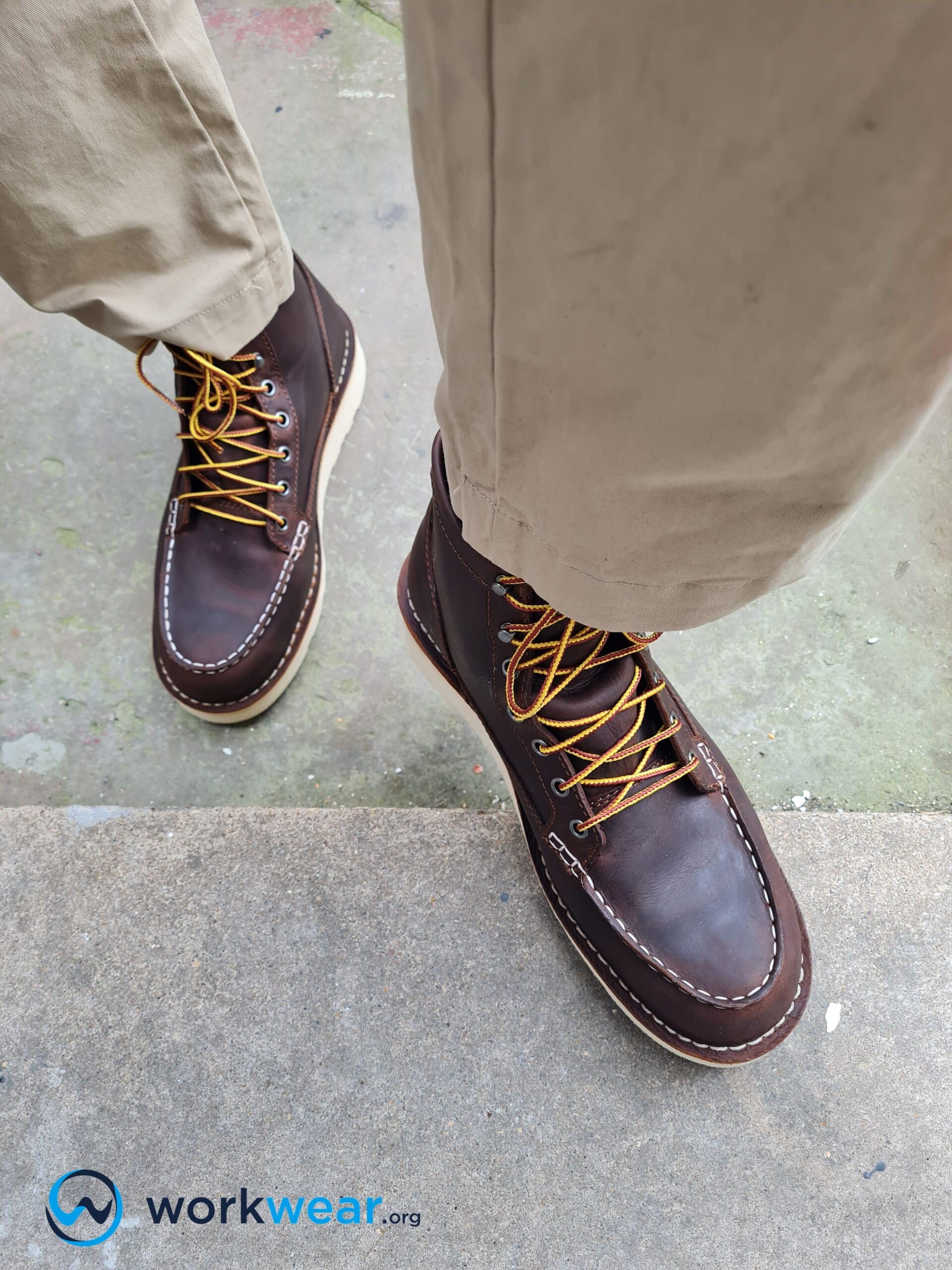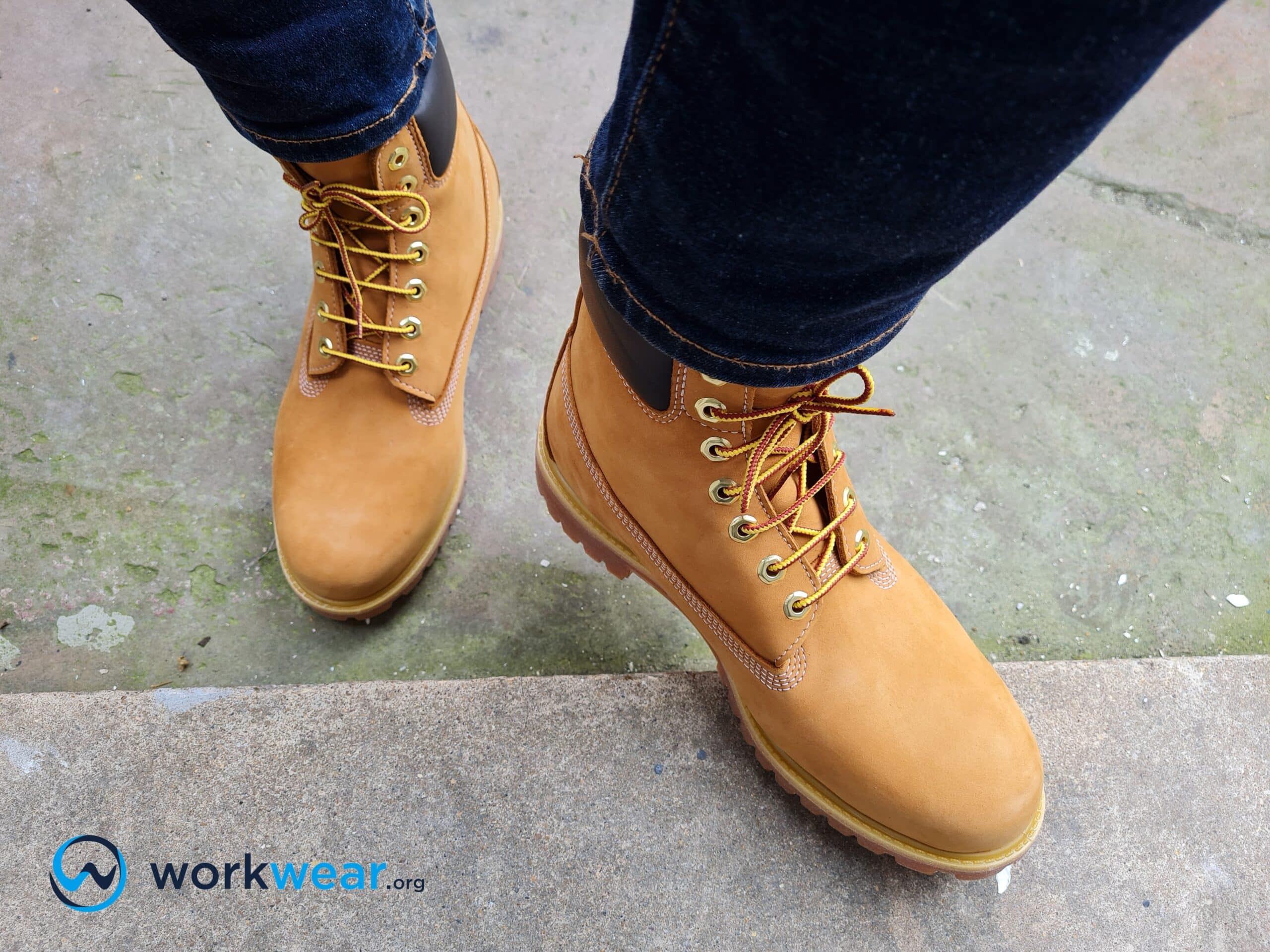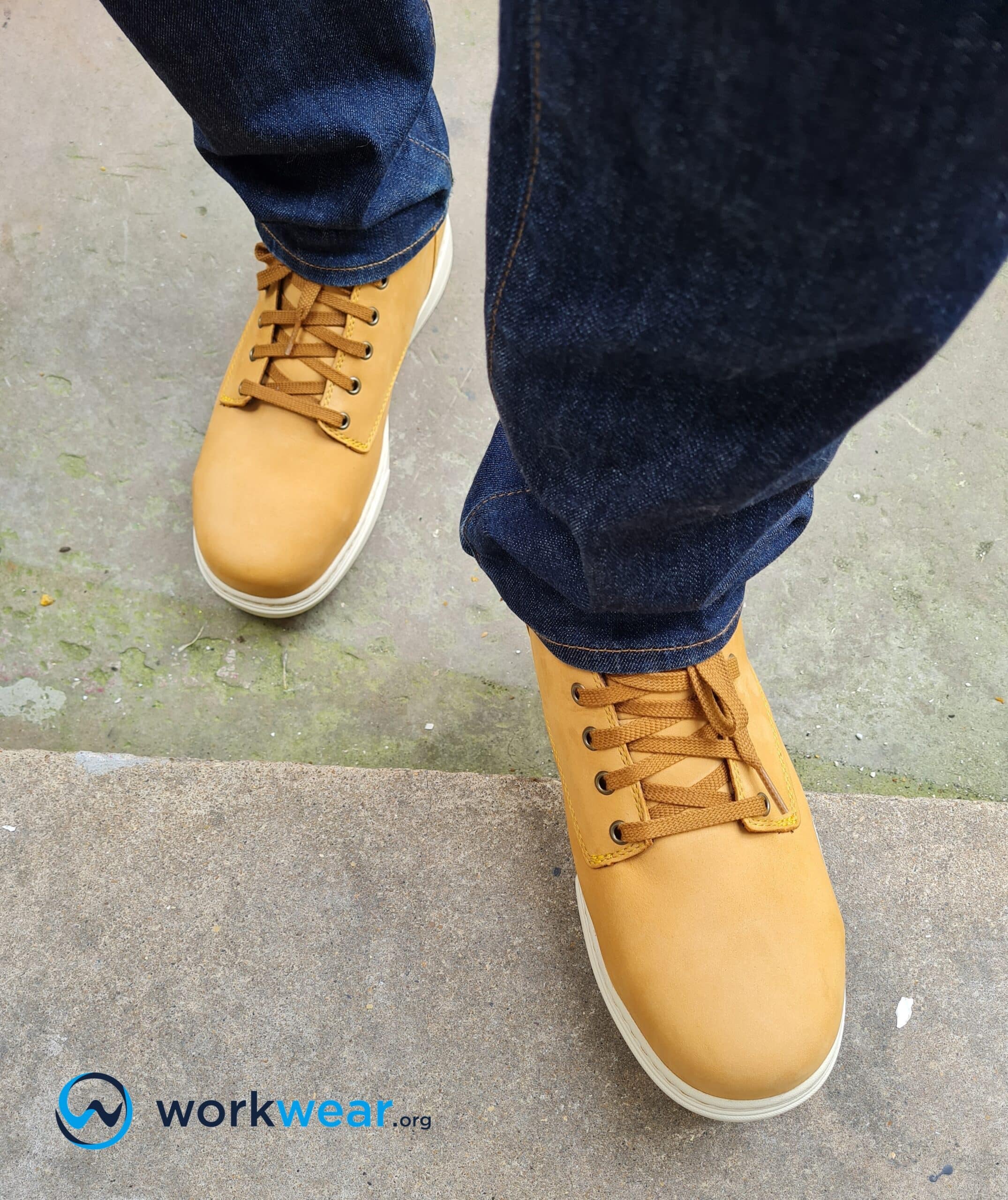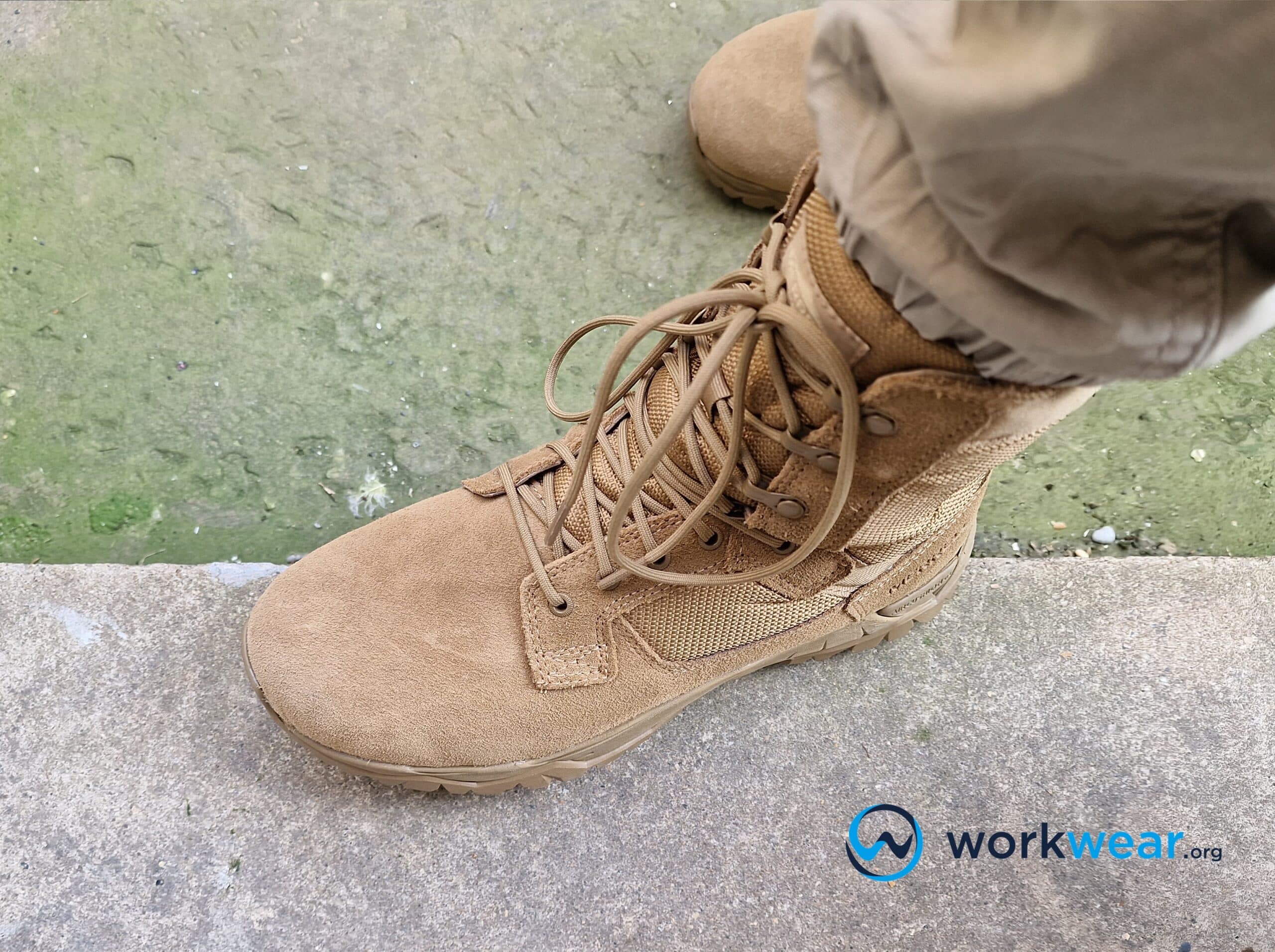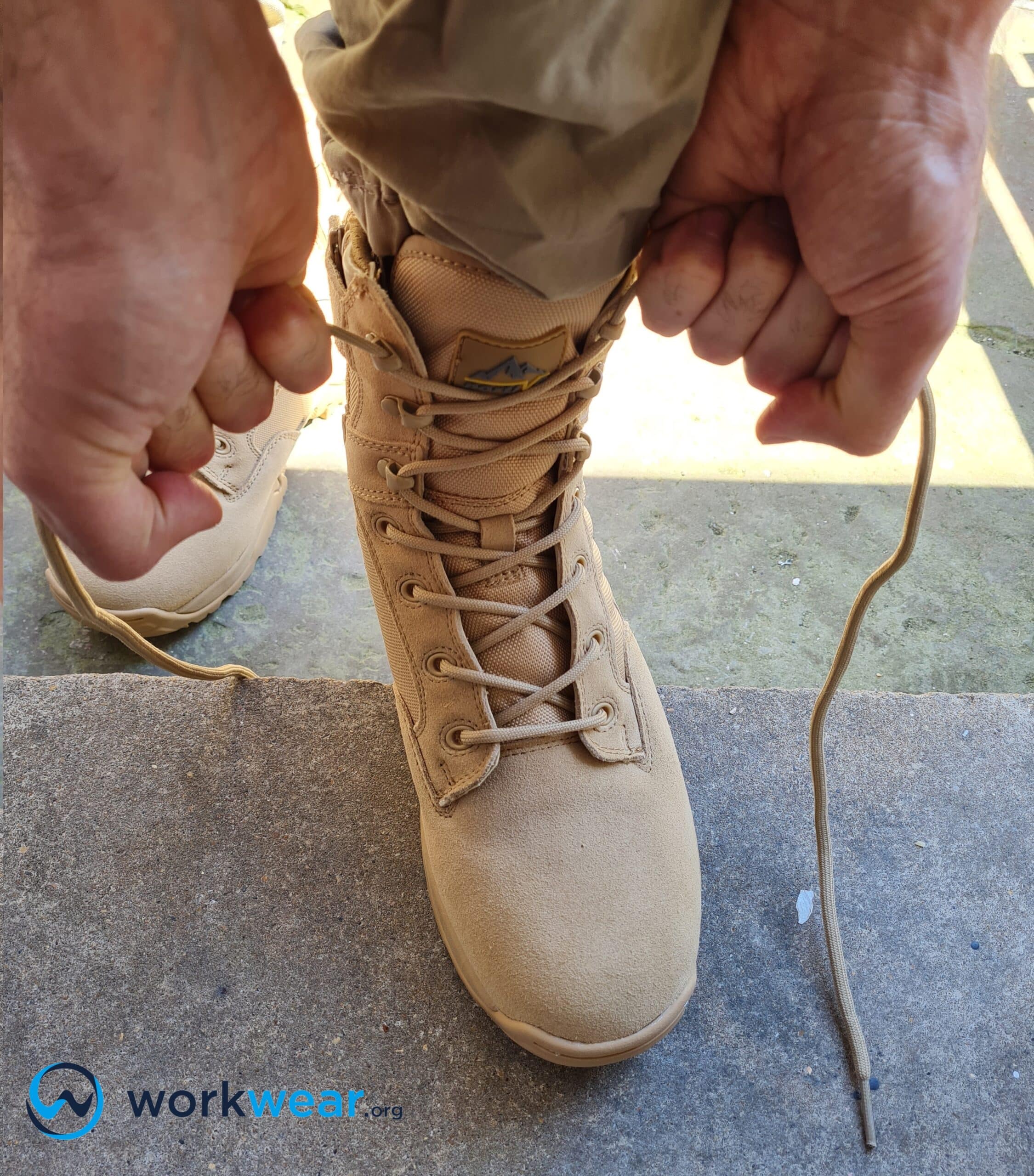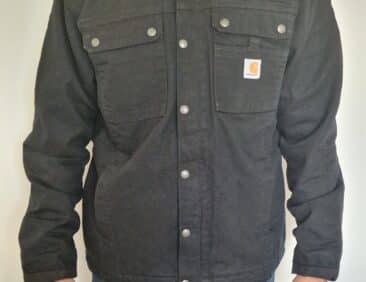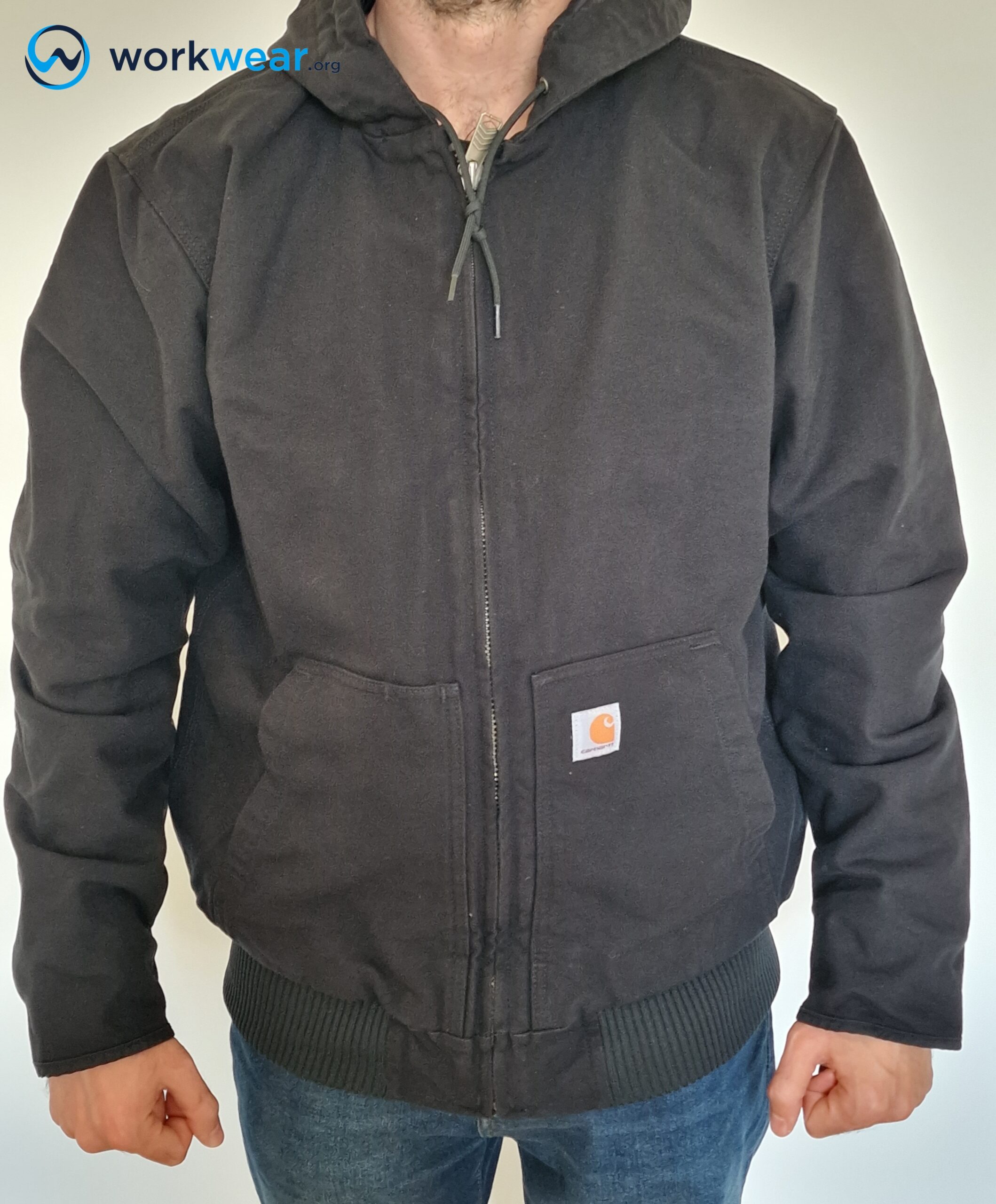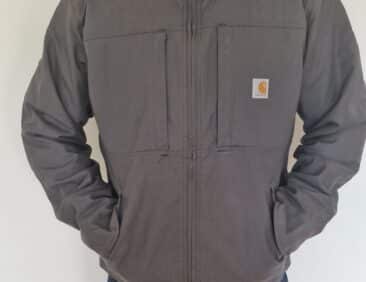Most Popular Colors of Work Boots
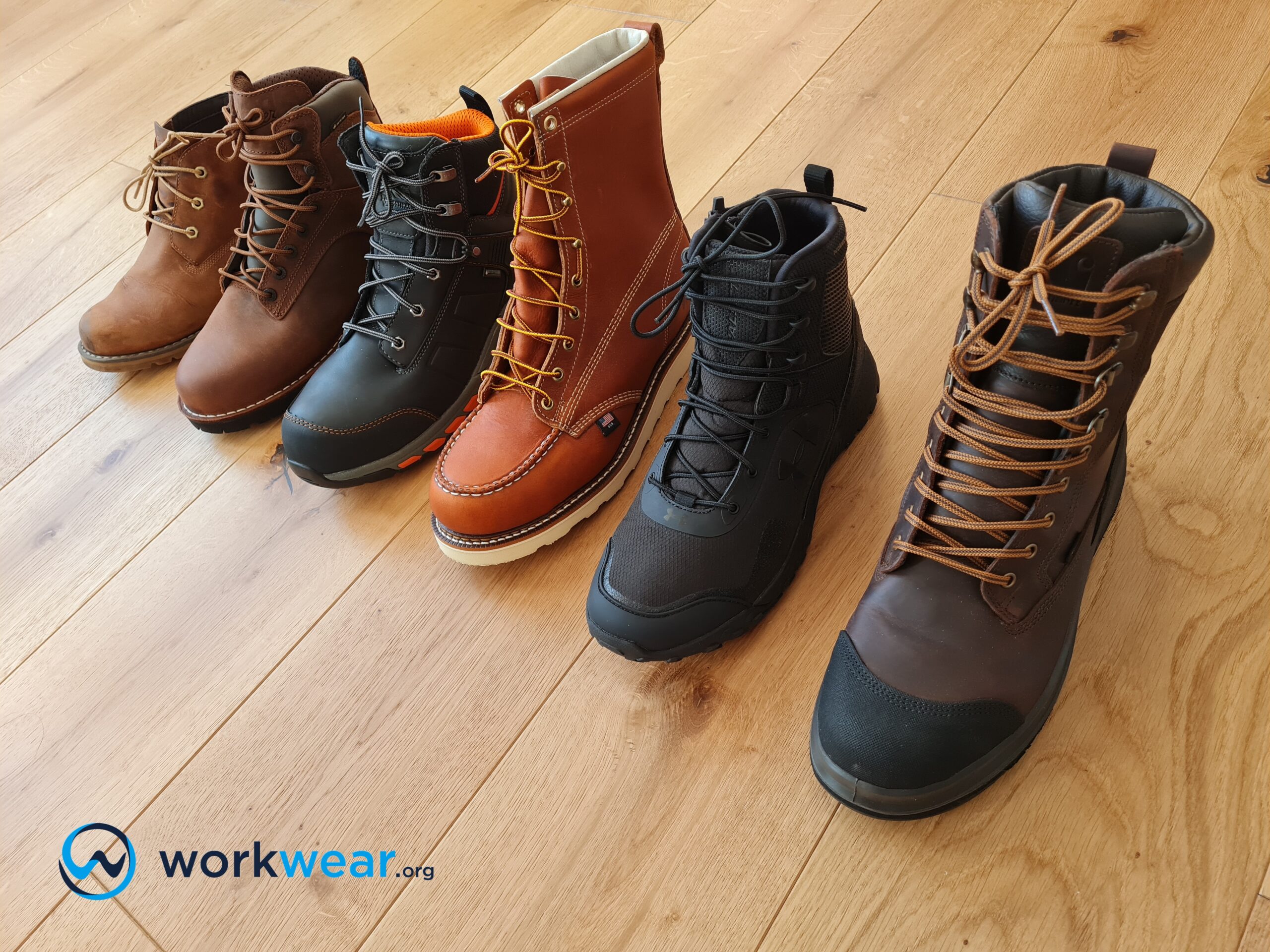
Work boots are essential parts of your work outfit. They protect and support the feet throughout the longest workdays, making different tasks easier to deal with while shielding the feet against various hazards on the job site. Work boots also play a key role in the overall look of work attire, so it’s important to consider their appearance when you’re still searching for the best pair.
When it comes to leather work boots, it’s easy to assume that there are only black and brown colored options available – and you may be surprised to know that there are other choices in work boots’ colors.
Let’s take this chance to discover what other colors of work boots come in and what benefits can be enjoyed with each option.
Key Takeaways
- Work boots come in several popular colors, each offering different advantages and disadvantages for varied work settings and professions.
- Black boots come in many styles, are versatile, look fashionably bold but can be used seamlessly with formal attire, conceal dirt, and look elegant when polished – but polishing requires extra effort and the black leather doesn’t age as gracefully as brown leather.
- Brown boots develop a nice patina over time, pair well with different colors, are available in a wide variety of designs, can hide dirt and stains, and there are different shades of brown – but they look less formal than black boots. They don’t polish as elegantly as well.
- Wheat-colored or yellow boots are trendy and darken nicely when wet, are easier to maintain without the need for polishing, and are more visible – but they have few style options, easily show dirt and stains, and aren’t appropriate for certain worksites.
- Desert tan boots have structures that are typically lightweight, flexible, and breathable for maximum mobility and comfort and easily blend into the field and other outdoor environments – but they’re not ideal for indoor office settings and are quite challenging to clean.
Most Common/Popular Colors of Work Boots
Black
Black is universally popular in clothing and footwear choices, and this idea also applies to work boots.
Black work boots inject a bold yet minimalist appeal and are quite easy to match with a wide variety of workwear. They are also great with more formal attire, especially if the leather upper can be polished to a mirror shine. Black boots work nicely with uniforms and casual clothing options with mostly black, white, or gray colors, but they can also pair well with other shades.
Key Advantages of Black Work Boots
Wide range of styles
Black work boots are available in many styles.
You generally won’t have a problem finding black boots in style required in your workplace or ones that also pair well, even with your casual clothing options. This is especially true if your wardrobe (for professional and personal use) is filled with white, black, and gray colors.
Versatile
While black boots generally work well with grayscale (including black, white, and gray) outfits, their availability in a wide variety of designs makes them easy to pair with different clothing options.
It’s quite easy to find black work boots that go nicely with jeans (especially the ones in the darkest shades) and slacks, allowing you to get extra mileage with your investment in black boots.
Bold yet minimalistic vibe
Black leather boots have a bold appeal, giving the simplest uniforms and workwear a stronger vibe without appearing inappropriate in work environments.
Meanwhile, black work boots also showcase a minimalist aesthetic that’s suitable for giving a stylish look to casual and professional wear without attracting unwanted attention.
Classy look when polished
Black leather boots look even better when polished, making them look much classier than brown boots.
They’re suitable for jobs (such as those in law enforcement or security) that require footwear to be polished to a mirror shine, making them look even more put together, along with specific uniforms.
Some designs are suitable for more formal attire
Black work boots in more low-key designs look better with formal attire than brown boots.
Black boots seamlessly work with formal black pants, typically part of elegant suits, since they don’t stand out the way other boots in other colors do.
Perfect polished black boots can also inject a classy vibe, providing a nice accent to formal wear.
Can hide stains and dirt
Black work boots can hide dirt, which is a huge benefit when working in challenging conditions that expose you to dust and other debris that can settle into the leather uppers.
These boots can also hide scratches and scuff marks nicely, so they don’t look as battered while you’re on the job. Black work boots are ideal for those who work with black paint and tar since these substances won’t show up easily when splattered onto the boots’ surface.
Key Disadvantages of Black Work Boots
Polishing will involve extra effort
Polishing black boots give them a mirror shine for an effortlessly elegant look, but it can take a bit of effort to complete.
This may be an issue if you have little time to spare, although certain jobs or work environments may require work boots to be polished regularly as part of a specified uniform.
Don’t age as nicely as brown boots
Black boots don’t develop the beautiful patina commonly associated with brown leather boots.
Although this doesn’t affect the boots’ performance, some people appreciate the lovingly aged look of leather boots that have softened and molded to the feet over time, and this typically can’t be achieved with black leather boots.
Uses of Black Work Boots
Black work boots are suitable and versatile enough for challenging work environments as well as office settings, making them great choices for the following jobs:
- Hotel front office staff
- Construction workers
- Police officers
- Engineers
Brown
Brown is another popular color when it comes to work boots.
The most common shade of brown is the one resembling milk chocolate – which is also the easiest to pair with different work and casual attire. However, brown work boots also come in different shades, including almost-black ones, those with copper tones, and much lighter variations that almost look orange.
This color effortlessly blends in with different colors, making brown boots suitable for a wider range of workwear.
Key Advantages of Brown Work Boots
Plenty of designs available
Brown work boots are available in a wide array of designs, so it’s not that challenging to find a profile that suits your job’s requirements or ticks your personal style preferences.
You can find brown boots that can be used on and off the work site just as easily as locating a pair that’s strictly for use while on the job.
Works with a lot of colors/outfits
Brown work boots are your best bet when your wardrobe is filled with various colors.
They’re easier to pair with different colors than black work boots, so that you won’t encounter any problems pairing them with a wider variety of casual clothing options and casual wear in different shades.
More visible (beautiful) leather aging
Brown leather boots develop a beautiful patina over time.
The parts that have molded to the foot’s shape will show some discoloration, giving an aged appearance that makes the brown leather upper look more elegant. Brown leather boots are better for those who prefer this aged look, as black leather boots can’t age this gracefully.
Dirt and stains are not very visible
Dark brown work boots are ideal for demanding work settings where there’s a lot of dust and other dirt sources all around.
Dust that settles on the boots’ surface won’t be very visible, so brown work boots – like black boots – can seem relatively clean throughout a busy workday.
Stains from splatters of different substances also won’t be very visible on dark brown leather boots.
Available in different shades of brown
Brown work boots can be enjoyed in different shades, making them easier to pair with a wider variety of clothes for various settings.
The most popular one may be the dark shade that resembles the appearance of milk chocolate, such as the color of the brown Danner Bull Run Moc Toe Boot. However, brown boots can also come in lighter options with almost orange tones, such as the Oro Legacy option for the Red Wing Heritage Classic Moc Toe Boot.
Key Disadvantages of Brown Work Boots
Generally, less formal than black boots
Brown work boots generally look more casual compared to black boots. They’re ideal for working in challenging conditions where they look more at home and where dirt will look less obvious.
However, they won’t pair as nicely with suits, especially the more formal ones with elegant black pants.
Don’t look as beautifully polished as black boots
Brown leather boots can be polished if needed, but they won’t look as beautifully polished as black leather ones.
The high shine that can be achieved with black boots doesn’t look as visible in brown leather boots.
Uses of Brown Work Boots
Brown work boots are suitable for demanding job sites as well as casual work settings, so they’re ideal for a wide range of jobs including:
-
- Carpenters
- Truck drivers
- Delivery personnel
- Teachers/professors
Wheat (Yellow)
Work boots also come in wheat colors, which are sometimes referred to as yellow. In reality, they’re not as striking as true, with bright yellow shades, and look similar to a very light brown.
These boots are typically made with nubuck leather sourced from cattle or deer, with the leather material possessing a distinctively yellowish-brown color that changes when it becomes wet but eventually turns back as it dries.
The brand Timberland is credited with coming up with the original “Yellow Boot” that’s tough yet stylish enough to be maximized in and out of the workplace.
Key Advantages of Yellow Work Boots
More easily seen
The light shade of yellow or wheat-colored boots makes them very visible in certain environments, including low-light workplaces.
The increased visibility offers improved safety, enabling workers to be more easily seen while working in the dark and in other conditions with reduced lighting.
Darkens nicely when wet
Nubuck leather turns darker when wet, so yellow work boots still look good when exposed to liquids.
But don’t worry because the color returns to the normal wheat-colored shade once the boots dry.
Easy to maintain
The nubuck material of yellow work boots doesn’t isn’t high maintenance and doesn’t need to be polished to continue looking good, unlike brown or black leather that may need polishing from time to time.
The light-colored leather preserves its high-quality appearance, offering almost effortless maintenance without being polished or shined.
Stylish look
Yellow work boots inject a cool vibe into work outfits.
Timberland’s iconic Original Yellow Boots were designed for superior functionality on different job sites but have since been appreciated for their style benefits. They’ve been staples in streetwear and hip-hop culture and continue to be valued because of their effortless individuality.
Key Disadvantages of Yellow Work Boots
Limited style options
Yellow work boots are available in significantly fewer styles compared to brown or black boots.
Looking for yellow boots that cater to your workplace needs can be daunting, especially if you have a specific design in mind.
Can look out of place in certain work environments
These boots’ yellow color may not blend nicely with certain uniforms and work environments.
Black or dark brown work boots are more versatile choices that are better suited for more work settings and with various work attire.
Easily shows dirt and stains
The light color of yellow boots makes them magnets for dirt, which can easily be seen on the footwear’s surface.
These boots are difficult to keep clean since dirt and stains are obvious, so they’re not ideal for muddy or extremely dirty worksites. In addition, oil splatters can cause permanent dark stains that can significantly deteriorate the appearance of wheat-colored work boots.
Uses of Yellow Work Boots
Yellow work boots look great with casual attire that can be used in a wide variety of work areas, such as the ones for the following professions:
- Graphic artists
- IT professionals
- Baristas
- Plumbers
Desert Tan
Desert tan work boots are primarily used for tactical purposes, such as tactical and military boots worn for training and duty activities. As these boots are often made with suede or non-leather uppers, they’re much more lightweight than traditional leather work boots so they can comfortably be used for long periods of walking or standing.
The desert tan or sand color easily blends in with many outdoor environments, so these boots are ideal for staying camouflaged while on the job.
Key Advantages of Desert Tan Work Boots
Typically, lightweight
Desert tan-colored work boots are often made with suede or other non-leather materials (such as abrasion-resistant Cordura), which are lightweight.
The reduced weight makes these boots ideal for walking or standing for long periods, such as those required while on active duty.
Breathable material
Desert tan boots usually come with abrasion-resistant sections that allow plenty of air.
The breathable materials also enable heat and moisture to escape quickly, preventing overheating from setting into the boots’ interiors for a comfortably fresh feeling all day long.
Generally, with flexible structures
These work boots are generally made from suede which is much more pliable than the thick leather that’s often used for traditional work boots.
This results in much more flexible boots, allowing a wider range of motion for comfortable walking while on duty.
Blends in with certain environments
These boots’ desert tan or sand color easily blends in with certain settings, such as those in different outdoor fields or forests.
This makes it easy to stay hidden as the boots remain camouflaged with the rest of the environment.
Key Disadvantages of Tan Work Boots
Not for formal work environments
The color of desert tan boots isn’t appropriate for formal work settings.
The light color also doesn’t look good when used with suits and may even look awkward when paired with jeans or chinos.
Difficult to keep clean
Desert tan work boots can be difficult to keep clean because they easily attract dirt.
Removing the dirt and stains may require more effort than maintaining work boots made with black or brown leather.
Uses of Desert Tan Work Boots
Desert tan work boots are ideal for jobs that require quick movements for efficient response to oftentimes critical situations, such as those that the following professionals can encounter:
- Military personnel
- Private security professionals
- Law enforcement personnel
- Public safety workers
Personal Testing experience
We’ll discuss our experiences using work boots in the most popular colors. First, we tried the Redback Bobcat Chelsea Boot in black, which was easy to clean with quick wiping and polishing. It came with safety features, including safety toe caps – but it isn’t the most versatile pair. The Caterpillar Second Shift Steel Toe Work Boot in dark brown successfully concealed dirt and scuff marks, so it maintained a clean look even after long hours of use in the workplace. It also showcased safety components – such as electrical hazard protection and steel toes – but its outsole feels a bit heavy and inflexible. Meanwhile, the Timberland PRO Disruptor Alloy Toe Boot in a yellow (or wheat) shade looked fashionable enough to pair well with casual outfits while performing well on the job site. It came with alloy toe protection and anti-fatigue features, but it easily showed dirt and stains with its light color and was quite challenging to clean. Finally, the Merrell MQC 2 Thermo GORE-TEX Boot in a coyote (desert tan) color is easily blended with certain outdoor environments, making it ideal for working on sand or dry soil that can be encountered while on active duty or even during training exercises. It had exceptional waterproofing courtesy of the GORE-TEX lining and lightweight insulation, although dirt and stains are very obvious against the light-colored upper material.
Conclusion
Work boots come in different colors that offer different benefits for various jobs and work environments. Black boots are versatile and can hide dirt, come in many styles, look stylishly bold but suitable for formal attire, and look classy when polished – but the leather doesn’t develop a beautiful patina, and polishing needs extra effort. Meanwhile, brown boots work with different colors of clothing and are available in a wide range of designs; the leather ages beautifully and doesn’t show stains or dirt, and it is available in different shades of brown – although brown boots don’t look as nicely polished as black boots and are less formal-looking as well. Wheat-colored or yellow boots are more visible and darken nicely when wet, are more stylish, and are easier to maintain – but they can look inappropriate in certain work settings, have limited styles, and easily get dirty. Finally, desert tan or sand-colored boots are typically lightweight, breathable, flexible, and blend in with many outdoor environments – but they’re unsuitable for formal work areas and are quite difficult to clean.
FAQs
- Do black boots always need to be polished?
- It depends on the material. For example, polishing will benefit smooth leather uppers, but polishing is optional for materials with different textures, such as suede or nubuck.
- Why are yellow boots good for low-light conditions?
- Yellow boots are more visible in the dark than darker boots – such as those made from brown or black leather. However, it’s better to choose work boots with reflective materials for improved safety in low-light environments.
- Can brown work boots be used for indoor offices?
- Yes, as long as the design isn’t too industrial looking or inappropriate when used with work attire suitable for indoor office settings.
- Are yellow boots suitable for tough work settings?
- It depends on the boots’ construction. For example, yellow boots with safety toes and waterproof materials can be used in harsh surroundings, but their light color makes them (generally) unsuitable for muddy conditions.
